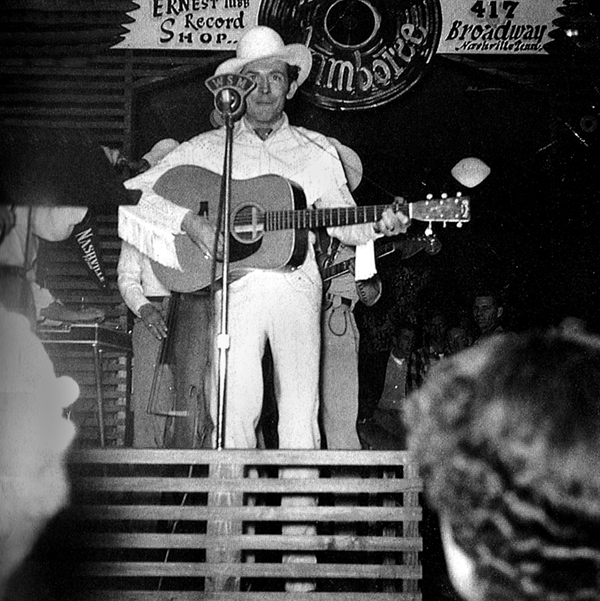Videos by American Songwriter
VARIOUS ARTISTS
COUNTRY & WESTERN HIT PARADE: DIM LIGHTS, THICK SMOKE AND HILLILLY MUSIC, 1951-1955
(BEAR FAMILY)
[Rating: 4.5 stars]
The “Hit Parade” part of this continuing series’ dual title is slightly misleading—in a good way. These “year-in-country” discs are not mere regurgitations of the annual bestselling singles lists, but sets of sides worth recalling, some celebrated, others more obscure, carefully culled by anthologizer Colin Escott to celebrate what, in retrospect, were the trends and tones of the year in question. The 20/20 hindsight proves a strong plus: it’s like having a set of winners of the History’s Choice Awards, both revealing and highly playable.
In the course of the half-dozen earlier releases in the series, covering country of 1945 through 1950, respectively, the last sounds of the swing era gave way to hardcore honky tonk, some early hints of the folk boom; the instrumentation included the increasing appearance of some serious rural electrification. World War II and Post-War themes gave way to frank talk of barroom life in complicated towns.
Hank Williams, just one of the multiple Hanks to show up in the earlier CDs, emerges as a central player in these new discs covering 1951 through 1955—the vocal imitators only growing in number after his death at the turn of ‘53. Some of those most influenced (Ray Price, George Jones, Faron Young, Porter Wagoner) find their own unmistakable voices in the course of these CDs. Indeed, the sheer individuality of the acts encompassed here can startle now; sounds from bluegrass (Hilo Brown, Jim Eanes), to Cajun (Rusty & Doug, Jimmy Newman), to r&b and gospel-influenced, smooth Southern pop (Ernie Ford, Red Foley), to early rockabilly (Bill Haley, Charlie Feathers), were competing for attention with the honky tonkers for chart positions and redefining “Country & Western” music, battles clearly accounted for here.
Just the list of artists included who’d emerged from the daring “Louisiana Hayride” radio show to earn record contracts is evidence of the invigorating new variety in country tones and rhythms of these years —Johnnie & Jack, Mac Wiseman, Webb Pierce, Slim Whitman and Elvis Presley. While the coming of the silkier Eddy Arnolds and George Morgans that would thrive in the Nashville Sound years up the road is accounted for, the central gravitational pull felt in these sets (and in much of Bear Family’s version of history, for that matter) is the country Escott describes as “grittier” in the detailed, highly researched notes that accompany each disc—the country that, in attack, clears the way for the rock and roll revolution. And that’s probably a good call from the modern audience’s standpoint, that emphasis on country that drives, whether it’s a Bill Monroe beat, the rhumbas introduced by Hank Snow and Johnnie & Jack, or the increasingly propulsive electric guitar leads and pedal steel fills captured emerging in these years.
A key bonus of this set’s format is that it provides a perfect setting for lesser-known, point-of-origin versions of songs that may have become better known as taken up by one or many cover artists later. So you’ll find included Curley Williams’ “Half As Much,” The Stewart Family’s “Just Out of Reach of My Two Empty Arms,” Jess Willard’s “Honky Tonk Hardwood Floor,” Slim Willet’s “Don’t Let the Stars Get in Your Eyes,” Bill Lister’s “There a Tear in My Beer,” Arlie Duff’s “You All Come,” and Terry Fell’s “Truck Drivin’ Man,”—terrific, often “original” versions of songs that are less likely to be in your collection already than hits from the major stars.
Year by year, this set brings alive, and in context, country in full bloom and at the height of its powers, varied, intriguing, pointed and fresh—and sounding very, very good.


One Comment
Leave a Reply